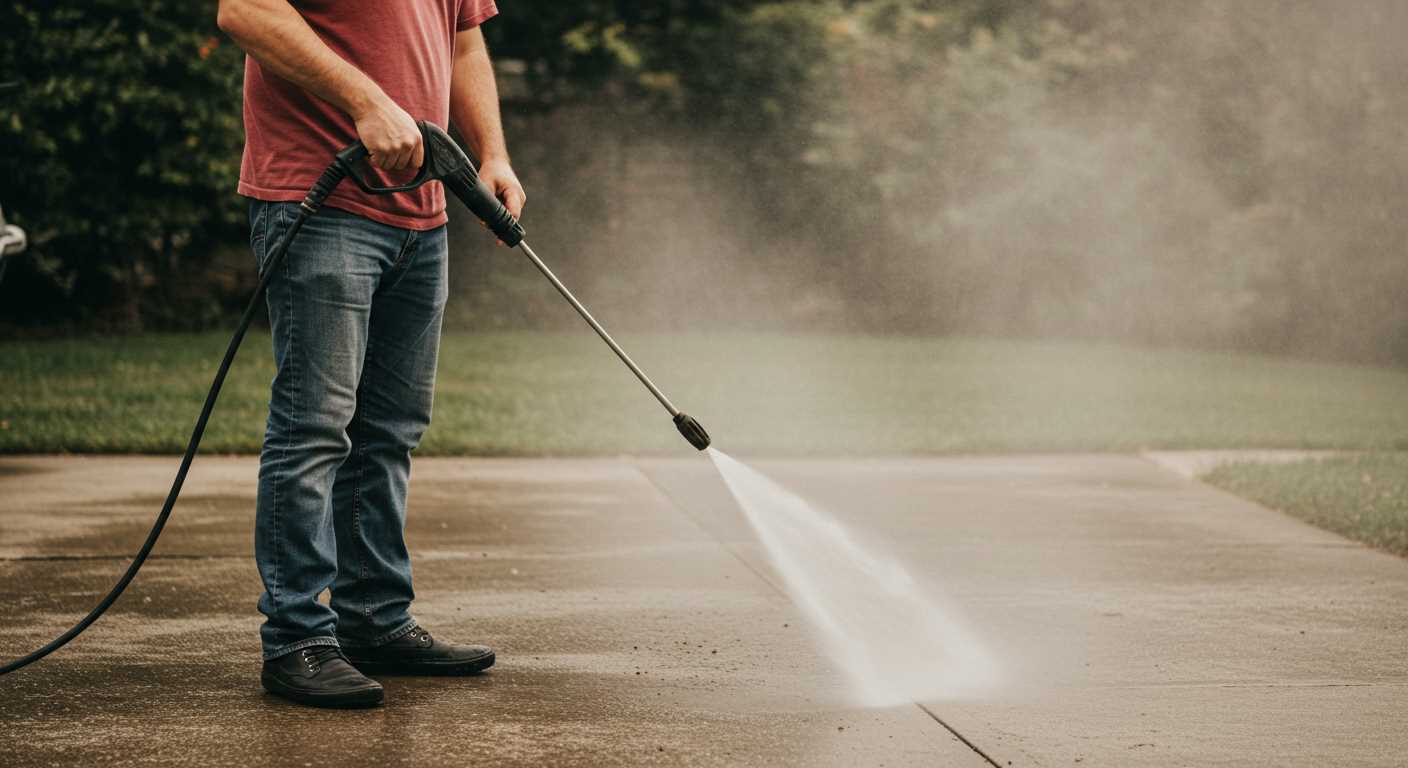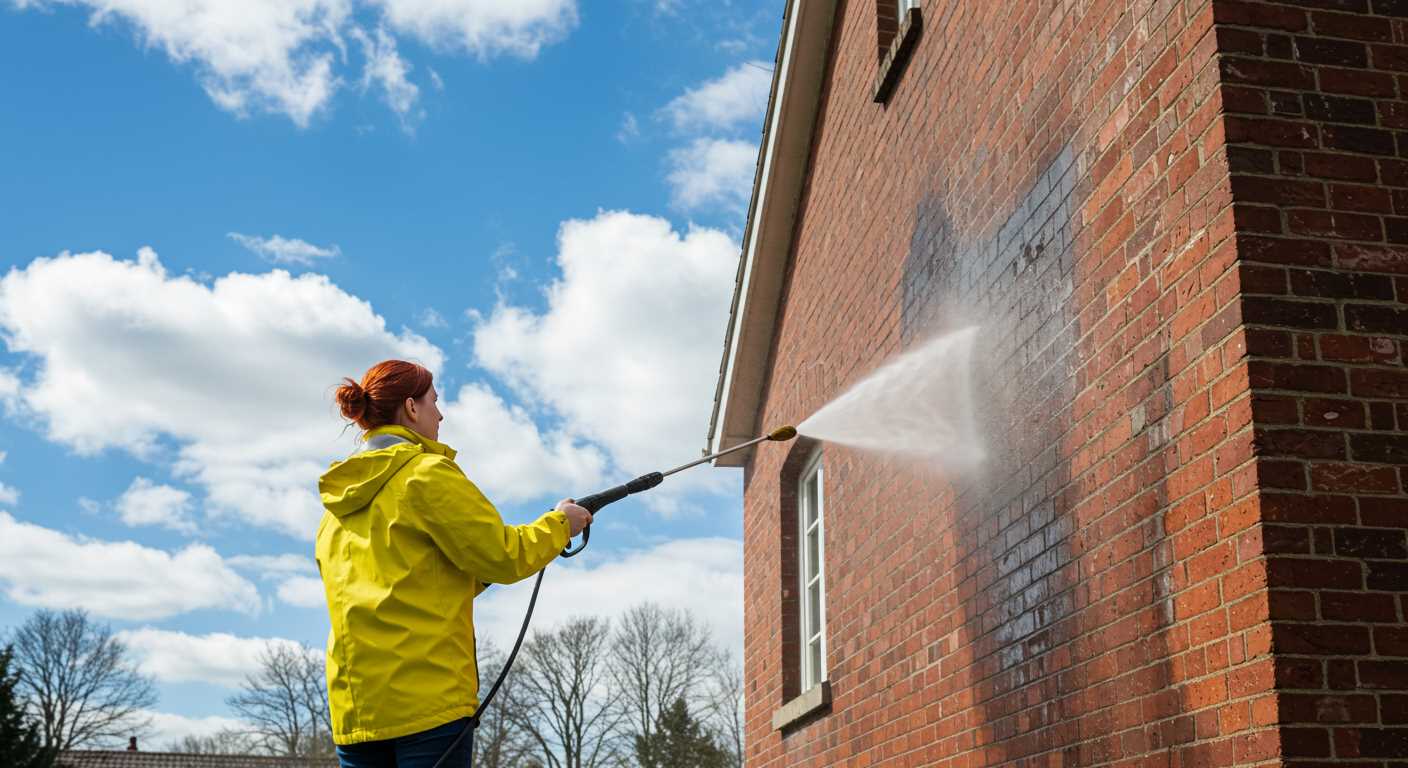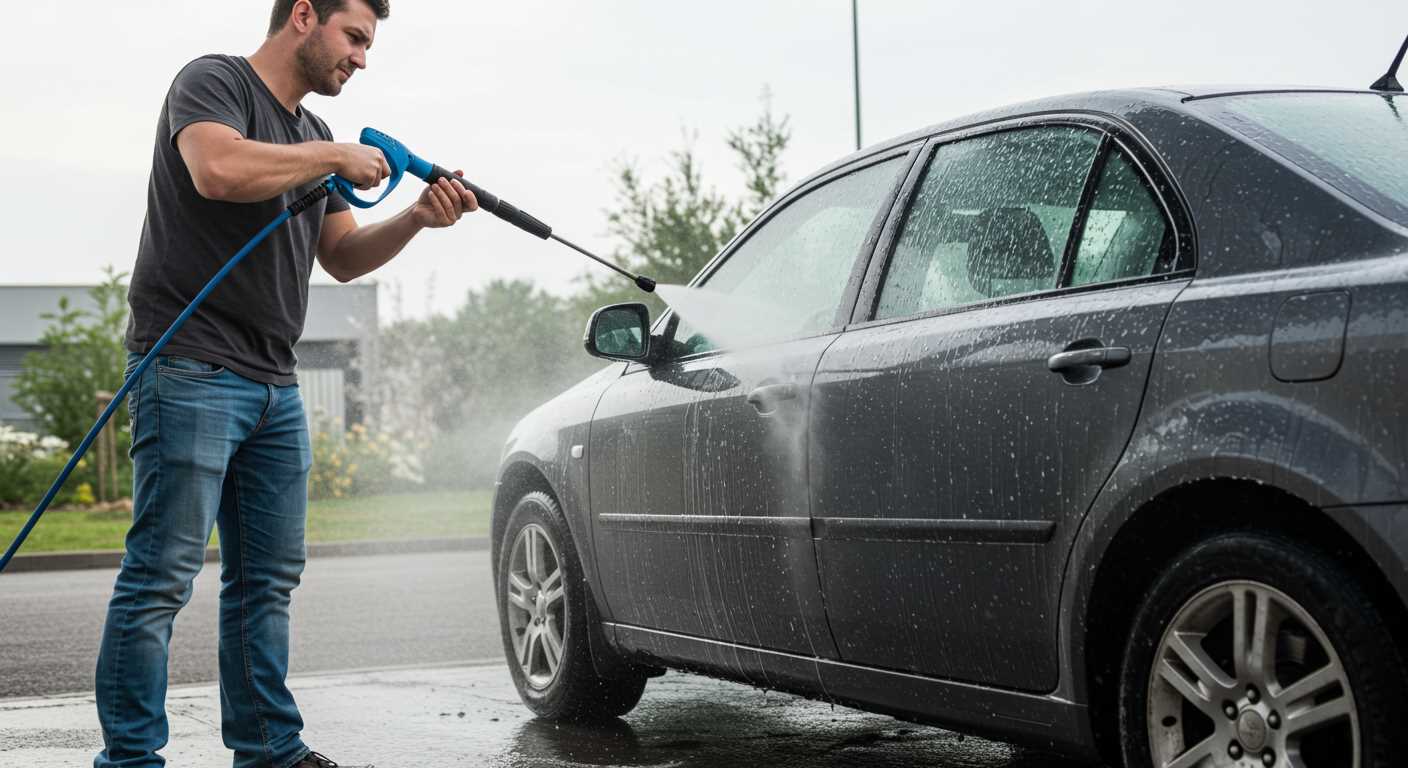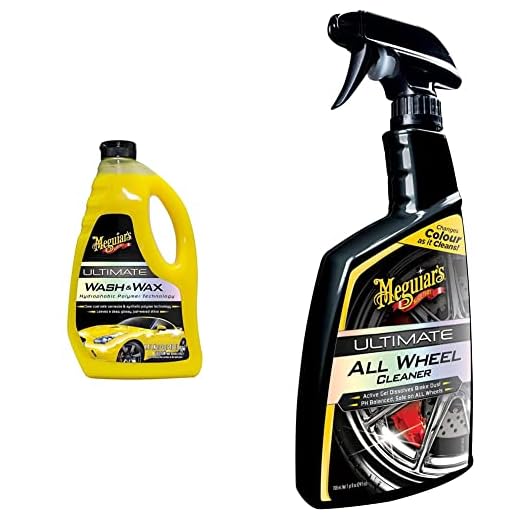



I recommend approaching the use of high-pressure cleaning machines with caution. While these devices are excellent for removing dirt and grime, incorrect usage can lead to unintentional harm to your vehicle’s exterior. Based on over a decade of experience in the industry, I can confidently say that understanding the correct techniques is paramount.
First, always maintain an appropriate distance from the surface you are cleaning. Keeping the nozzle at least 30 cm away helps prevent the forceful stream from damaging the clear coat. Opt for a wide spray pattern rather than a pinpoint jet. This spreads the pressure more evenly and reduces the risk of chipping or stripping paint.
Next, consider the pressure setting appropriate for automotive applications. Many modern units offer adjustable options; a setting around 1200 to 1500 PSI is typically effective for general cleaning without compromising the integrity of the finish. Additionally, never aim directly at seams, edges, or decals, as these areas are more susceptible to damage.
Lastly, always perform a test on a small, inconspicuous area before proceeding with the full body wash. This step will help you gauge the effects of the cleaning process on your vehicle’s surface. With careful attention to these guidelines, you can safely enjoy the benefits of high-pressure cleaning.
Impact of High-Pressure Cleaning on Vehicle Surfaces

To protect your vehicle’s finish, it’s best to keep the nozzle at least 2 feet away from the surface during cleaning. Using a wide spray pattern helps distribute the force more gently. Aim to start with a low setting and gradually increase pressure if necessary, avoiding any direct hits on edges or areas with existing imperfections.
Always ensure that the cleaning solution or detergent being used is specifically formulated for automotive finishes. Regular household cleaners and harsh chemicals can exacerbate the risk of wear.
Pay particular attention to any faded areas or chips in the coating; these spots require extra caution, as they are more susceptible to harm from high-velocity jets. Inspect the surface thoroughly before and after the process to catch any potential issues early.
For optimal results, consider using a foam cannon attachment; it allows for even distribution of soap and reduces the need for high-pressure rinsing. After washing, a hand wash with a soft sponge will ensure that any remaining dirt and grime are removed without causing scratches.
Maintaining a safe distance, using appropriate detergents, and adopting a gentle technique will minimise the risk of harming your vehicle’s exterior, ensuring it remains in good condition and looking pristine. Regular detailing and waxing will further enhance protection against potential damage from any cleaning method.
Understanding Pressure Washer Ratings and Their Impact
Selecting the right equipment starts with understanding the ratings. Focus on the PSI (pounds per square inch) and GPM (gallons per minute) values. For automotive surfaces, a PSI range of 1200 to 1900 is generally safe. Higher pressure can lead to unintentional effects on finishes.
PSI Explained
The PSI indicates the force of the water. A higher PSI does not always mean better cleaning; it can create risks. For delicate finishes, anything above 1900 can cause issues. For standard washing needs, aim for a moderate PSI to ensure safety and effectiveness.
Understanding GPM
GPM measures the flow rate. A higher GPM means a quicker clean. However, a balance with PSI is vital. Too much flow with high pressure can oversaturate surfaces, possibly causing damage. An optimal GPM of 1.5 to 2.5 is typically beneficial for car surfaces.
In my experience, matching PSI and GPM for the task at hand is key. Read the user manual of your cleaning device for specific recommendations. Pressure ratings are not just numbers; they define how safe and effective your cleaning process will be.
Always remember, technique and distance matter. Maintain a distance of at least two feet from the surface to avoid complications. Regular maintenance and learning proper usage techniques lead to longer-lasting results without the risk of harm.
Identifying Safe Pressure Levels for Vehicle Cleaning
For optimal care of your vehicle’s exterior finish, I recommend using a maximum output of 1200 to 1900 PSI. This range provides effective dirt removal without introducing the risk of harming the surface.
Selection of Nozzles
Utilising the correct nozzle is critical. A wider spray pattern, such as 25 or 40 degrees, disperses the force over a larger area, which helps prevent chipping or scratching. Avoid turbo nozzles for regular cleaning, as they concentrate force too narrowly.
Distance and Technique
Maintain a distance of at least 2 feet from the surface. This distance reduces the intensity of the jet and gives you better control. Move in sweeping motions rather than focusing on a single spot to avoid concentrated pressure.
| PSI Range | Recommended Nozzle | Distance from Surface |
|---|---|---|
| 1200 – 1900 | 25° or 40° | 2 feet |
| Less than 1200 | 40° | 1.5 feet |
| Above 1900 | Avoid for standard cleaning | 3 feet or more |
Adhering to these guidelines will significantly lower the chance of harming your vehicle’s finish while ensuring a thorough clean. Always test on a less visible area first if unsure.
Choosing the Right Nozzle for Car Wash Applications
Opt for a fan nozzle for an optimal wash experience. These nozzles create a wide dispersal pattern, effectively covering larger areas without risking harm to delicate surfaces. The 25-degree and 40-degree options are particularly suitable for vehicle exteriors, providing a gentle yet thorough clean.
Types of Nozzles
Red nozzles, typically at 0 degrees, produce a concentrated stream ideal for stubborn grime but can easily etch clear coats. Yellow nozzles, at 15 degrees, offer a more forceful spray suitable for tough dirt, especially on wheels and rubber. However, these should be used with caution. The green (25-degree) and black (40-degree) nozzles are perfect for general washing, preventing unintentional damage while delivering an effective clean.
Adjustable Nozzle Considerations
Consider adjustable nozzles for versatility; they allow for quick modifications to the spray pattern based on cleaning needs. This ensures protection against unintentional surface harm while adapting to various cleaning scenarios. When utilising adjustable types, always start with the widest setting, gradually increasing intensity as necessary.
Common Mistakes When Using a Pressure Cleaner on Vehicles
Using a high-powered cleaning tool on your vehicle can yield impressive results, but numerous blunders can turn the experience sour. Acknowledging these pitfalls can prevent costly errors.
- Inadequate Distance: Standing too close can lead to unintentional scratches. Maintain a distance of at least 2-3 feet from the surface to mitigate risks.
- Neglecting Correct Nozzle: Using the wrong type of nozzle can cause uneven cleaning. Opt for a wide spray nozzle (25° or 40°) for vehicles to ensure a gentler approach.
- Incorrect Pressure Setting: Failing to adjust the pressure accordingly can lead to unintended abrasions. Always start with the lowest setting, gradually increasing as needed.
- Not Pre-Rinsing the Surface: Skipping the initial rinse can result in dirt being pushed into the paint. Perform a thorough pre-rinse to loosen debris before applying any cleaning solutions.
- Using Harsh Chemicals: Some cleaning agents are too aggressive and can cause harmful reactions. Always choose pH-balanced car shampoos specifically formulated for automotive finishes.
- Ignoring Seals and Trim: Directing the stream towards vulnerable areas like seals can lead to water ingress. Make sure to clean these parts gently or avoid them altogether.
- Cleaning in Direct Sunlight: This can cause soap to dry too quickly, leading to streaks. Opt for shaded areas for more effective results.
- Forgetting to Rinse Thoroughly: Residual cleaning products left on the surface can attract dirt and harm the finish. Ensure a complete rinse after washing.
By steering clear of these mistakes, you can enjoy the benefits of thorough cleaning without compromising your vehicle’s appearance.
Surface Types: Which Vehicle Finishes are More Vulnerable?
For those concerned about their vehicle’s exterior, it’s important to recognise that certain finishes are more susceptible to high-pressure cleaning methods. Clear coats, for example, can be compromised by excessive force, especially if they’ve already been subject to wear and tear or environmental factors.
Automobiles painted with softer compounds, such as enamel, are at greater risk. These finishes typically require gentler handling to avoid chipping or discolouration. In contrast, more resilient surfaces like ceramic-based finishes provide some protection against aggressive cleaning. However, even these coatings can fall victim to severe jets of water if the angle or distance is inappropriate.
Common Finish Vulnerabilities
High-gloss and metallic paints often exhibit a glittery surface that can reflect light beautifully but can also mask minor damage. This means that what appears seamless can actually hide issues caused by poor washing techniques, including micro-scratches or dulled areas from overly forceful applications. Knowing your vehicle’s specific finish will help tailor your cleaning routine adequately.
Protective Measures

To maintain your vehicle’s aesthetic, it’s wise to apply a wax or sealant that acts as a buffer. This not only adds a layer of protection but also can make future cleaning tasks much simpler and less aggressive. If you’re unsure about the vulnerability of your vehicle’s surface, a cautious approach is to start with lower force settings and gradually adjust until you find the optimal balance. Doing your research on your specific vehicle model and its finish can significantly influence the long-term preservation of its appearance.
Best Practices for Protecting Vehicle Gloss During Cleaning
Always start by rinsing your vehicle with lukewarm water. This removes loose dirt and grime, making the washing process gentler on the surface.
Employ a two-bucket method when applying soap: one for the soapy water and another for rinsing your sponge or mitt. This prevents dirt from reintroducing scratches to the vehicle’s finish.
Use a pH-neutral car shampoo to maintain the protective coatings. Acidic or alkaline products can degrade wax and sealants, leading to premature fading.
Limit cleaning sessions to cooler parts of the day, avoiding direct sunlight. High temperatures can cause cleaning agents to dry too quickly, risking streaks and residue.
A microfiber cloth is ideal for drying surfaces. Unlike regular towels, it minimises the likelihood of swirls and marks. Gently pat the surface dry rather than rubbing it.
Consider applying a ceramic coating every few months. These products add a layer of protection, making the vehicle less susceptible to contaminants and easier to clean.
Regularly inspect and maintain wax layers. A fresh coat every few months enhances gloss and shields the exterior from harmful elements.
Be cautious around sensitive areas like badges and seams. Direct sprays can force water into these spots, potentially leading to rust or electrical issues.
Finally, always check for loose trim or elements that could dislodge during cleaning. Taking extra care with delicate areas preserves the integrity of the entire vehicle.
Aftercare: Repairing Any Damage Caused by Pressure Washing
If you notice any inconsistencies in the surface after cleaning, take immediate action to prevent further deterioration. Here are the recommended steps:
1. Inspect the Area

Begin with a thorough examination. Look for signs of wear, scratches, or discolouration. Pay close attention to edges and areas where paint may be compromised. If the clear coat is affected, restorative measures should be taken quickly.
2. Cleaning and Preparation
- Wash the area gently using a soft cloth and mild detergent. Ensure no debris remains that could lead to further scratches during the repair process.
- Dry the surface completely to avoid trapping moisture under any applied products.
3. Touch-Up Paint Application
For small scratches or chips, use a matching touch-up paint. Follow these steps:
- Shake the touch-up paint well before application.
- Apply with a fine brush, ensuring to stay within the margins of the damaged area.
- Allow adequate drying time as indicated on the product packaging.
4. Clear Coat Restoration
If the clear coat is scratched, consider using a clear coat polish. Apply with a soft, clean applicator in circular motions, buffing gently to restore shine and protection.
5. Waxing for Protection
Once repairs are complete, apply a high-quality wax. This will help seal the repairs and enhance the overall appearance.
Regular checks after cleaning will help maintain the finish and highlight any issues before they escalate. Keeping a careful eye on the condition of the surface ensures a pristine look and longevity.
Alternatives to Pressure Washing for Car Maintenance
For those concerned about the risk of harming their vehicle’s finish, several effective alternatives exist. Consider using a hand wash technique with a high-quality car shampoo and a microfiber mitt. This method allows for direct control, reducing the likelihood of scratches or abrasions.
Another option is a foam cannon, which attaches to a standard hose. This tool creates a thick layer of foam, providing an effective clean while being gentle on surfaces. After applying, a soft wash mitt can help lift away grime without aggressive scrubbing.
Waterless car wash products are also a practical choice for quick detailing. These sprays encapsulate dirt, allowing it to be safely wiped away, effectively cleaning without the need for extensive rinsing. Ensure to use microfiber cloths for optimal results and to prevent surface marring.
Additionally, considerations for maintaining the vehicle’s exterior might include using detailing clay bars. They remove embedded contaminants without abrasiveness, preparing the surface for waxing or polishing.
Regularly applying a sealant or wax can protect the finish and make future cleaning easier. This layer repels dirt and debris, thus reducing the frequency of more intensive cleaning methods.
For those who prefer automated solutions, soft-touch car washes provide a gentle alternative. These systems utilize foam and fabric materials that clean effectively without the risk associated with high-pressure equipment.
Utilising these methods can maintain the vehicle’s aesthetic appeal while safeguarding its surface quality. Adopting a careful and informed approach ensures longevity and shine without compromise.









